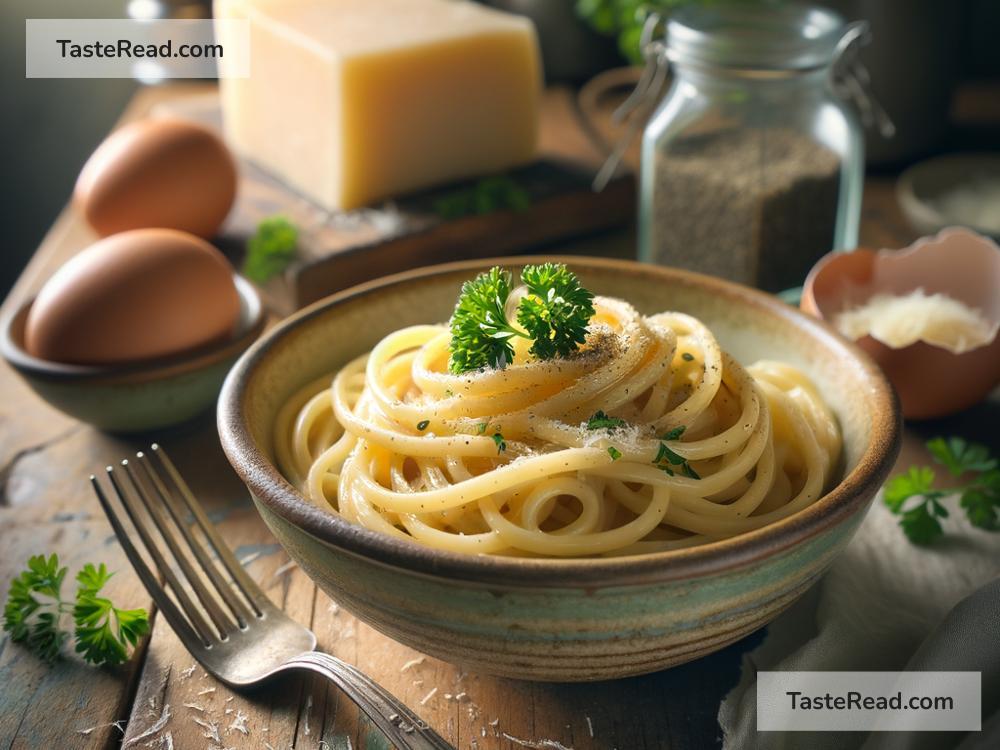Exploring the Origins of Italian Carbonara: A Delicious Mystery
Ah, Carbonara! Just the name of this Italian dish brings to mind creamy, comforting pasta that’s loved by many around the globe. But have you ever paused to wonder where this delightful dish comes from? Join me on a voyage back in time as we explore the intriguing origins of the Italian Carbonara. Don’t worry, we’ll keep it simple and fun – no complicated chef talk here!
The Basics of Carbonara
Before we jump into our time machine, let’s make sure we know what Carbonara is all about. In its simplest form, Carbonara is a pasta dish that’s made with eggs, Pecorino Romano cheese, pancetta (or guanciale, which is cured pork cheek), and lots of black pepper. It’s creamy, but guess what? There’s no cream in the traditional recipe. That creamy texture comes from the eggs and cheese when they’re mixed with the hot pasta. Pretty neat, right?
The Name Game
The name “Carbonara” might give us a clue about the origins of the dish. One popular theory is that it comes from the word “carbonaro,” which means “coal burner” in Italian. Some say that this dish was a favorite among Italian coal miners because it was hearty, easy to make, and the ingredients were readily available. It’s a charming story, but the truth might be a bit more complicated.
The Rome Connection
Another trail leads us to Rome, the heart of Italy, where many believe Carbonara was born. This theory suggests that the dish is a relatively recent invention, possibly from around the end of World War II. The story goes that American soldiers in Italy mixed their rations of eggs and bacon with local pasta, and thus, Carbonara was created. However, this version of the story has its skeptics since there are mentions of a dish resembling Carbonara in Italian cookbooks predating the war.
A Dish of Mystery and Adaptation
What adds to the mystery of Carbonara’s origins is that there is no single, definitive recipe. Different regions of Italy make it in their own special way. For example, some use pancetta while others insist on guanciale. And let’s not even start on the type of pasta: spaghetti, rigatoni, or fettuccine? Everyone has their preference!
The Debate Over Ingredients
Any conversation about Carbonara among food enthusiasts inevitably leads to a debate over what goes into the dish. Traditionalists argue that true Carbonara only includes pasta, eggs, Pecorino Romano cheese, pancetta or guanciale, and pepper. No cream, no mushrooms, and definitely no peas – although many variations outside Italy include these.
Why We Love Carbonara
Despite its mysterious origins, or maybe because of them, Carbonara continues to capture the hearts (and stomachs) of people all over the world. It’s a dish that feels both luxurious and comforting at the same time. And perhaps its beauty lies in its simplicity – with just a few quality ingredients, you can create something truly magical.
Making Your Own Carbonara
Feeling inspired to make your own Carbonara? Here’s a little encouragement: it’s easier than you might think. The key is to use fresh, quality ingredients and to work quickly to mix the hot pasta with the eggs and cheese, creating that creamy sauce without scrambling the eggs. And remember, whether you’re a purist or an innovator, making Carbonara at home means you get to decide what goes into your version of this classic dish.
Conclusion: A Dish Wrapped in History
The true origin story of Carbonara might remain a delicious mystery, wrapped in layers of history, culture, and culinary innovation. Whether it was a dish born from the resourcefulness of coal miners, the fusion of Italian and American cuisines, or something that evolved over time within Italy itself, one thing is certain: it’s a dish worth celebrating.
So, the next time you indulge in a plate of creamy, comforting Carbonara, take a moment to appreciate the rich history and the simple beauty of this beloved dish. And who knows? Maybe you’ll be inspired to add your own twist to the Carbonara tale. Bon Appétit!


